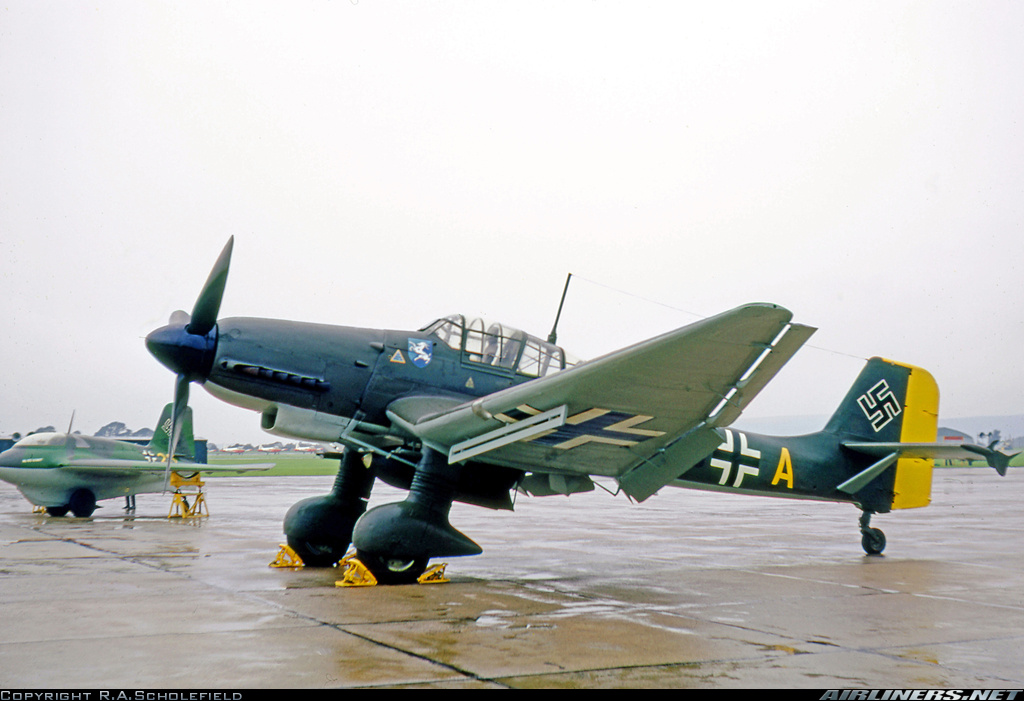
Junkers Ju87G2 Stuka Germany Air Force Aviation Photo 2549813
One of the most feared aircraft in World War Two, the Junkers Ju-87, was known for its accuracy and sunk more ships than any other aircraft in history. Eventually, the type was rendered obsolete due to its low speed and the advent of jet bombers, with few surviving examples remaining worldwide.. A 1941 Junkers Ju-87R-2 Tropical Stuka is.
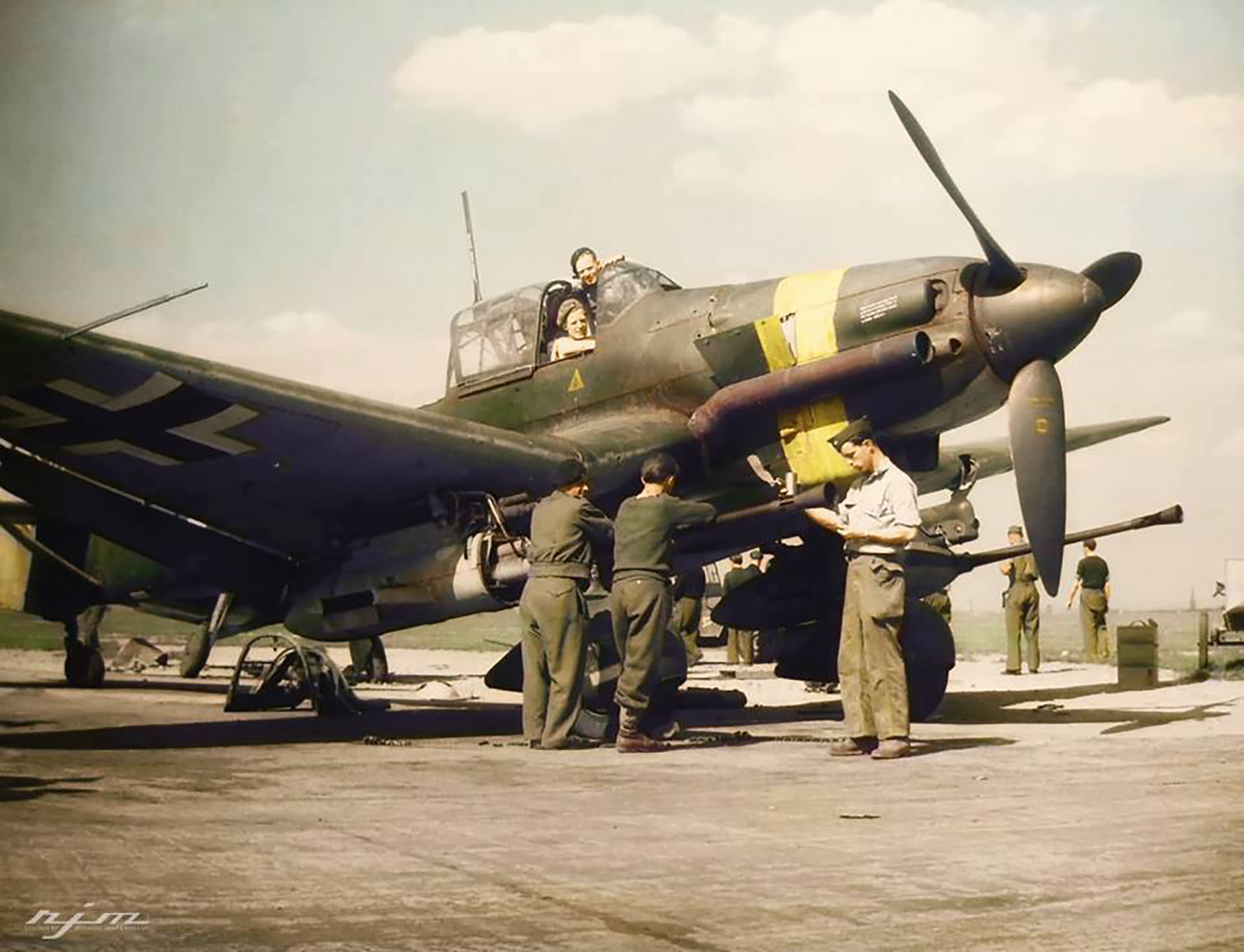
Junkers Ju 87G2 Stuka Kanonenvogel captured tank buster Salzburg Austria 194507
Stuka, a low-wing, single-engine monoplane—especially the Junkers JU 87 dive-bomber—used by the German Luftwaffe from 1937 to 1945, with especially telling effect during the first half of World War II.The Stuka was designed to employ the dive-bombing technique developed earlier by the U.S. Navy—i.e., diving on the target at a steep angle and releasing the bombs at low altitude for.
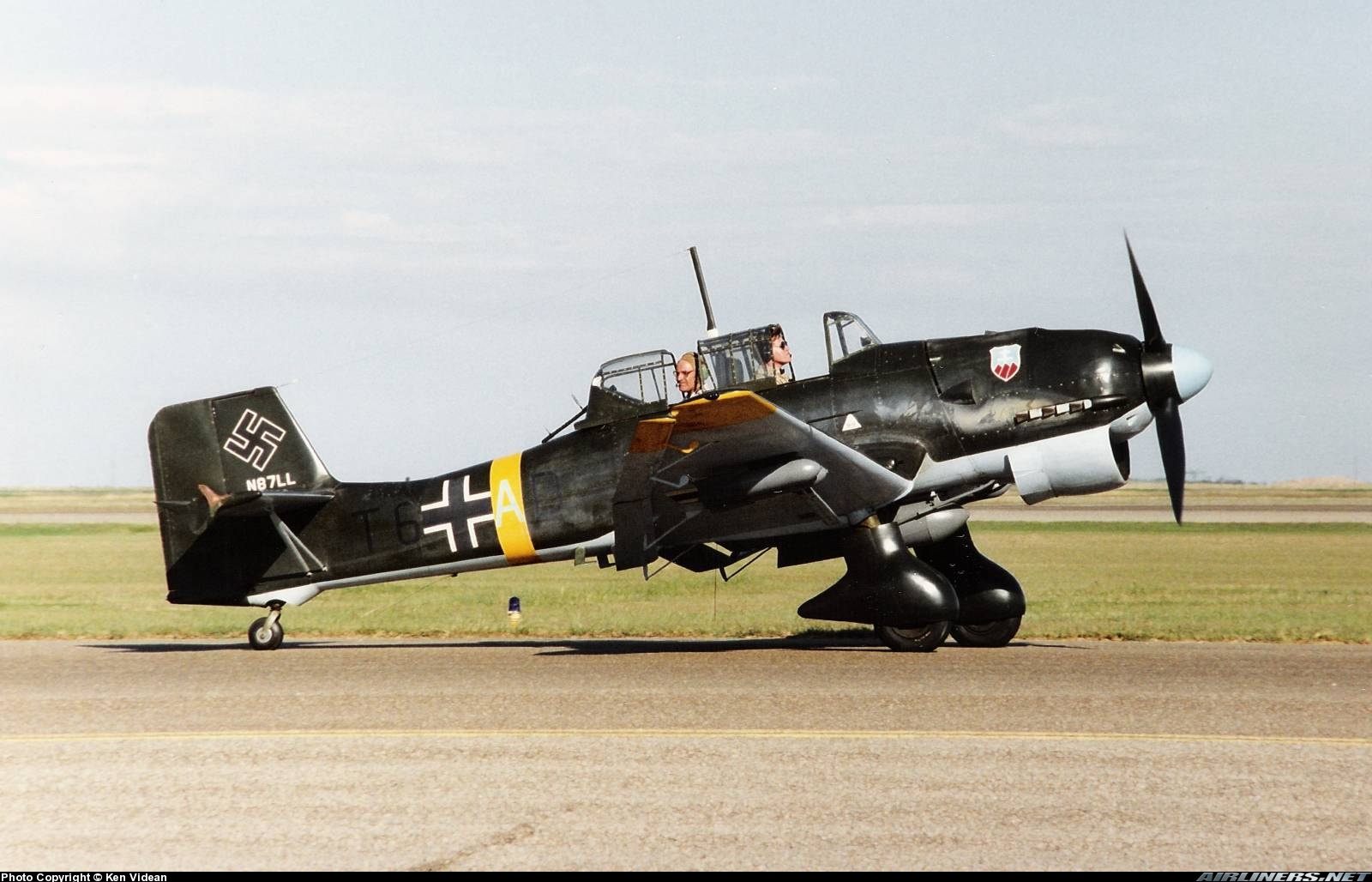
Junkers Ju87 Stuka (replica) Untitled Aviation Photo 0736577
The Ju-87 may have carried a relatively small bomb load, but this was more than made up for by its ability to place precisely where it mattered most. The first Ju-87s were certainly not perfect. The aircraft had been designed to carry a 500kg bomb on the centreline, on a trapeze that swung it out beyond the arc of the propellor so it could be.
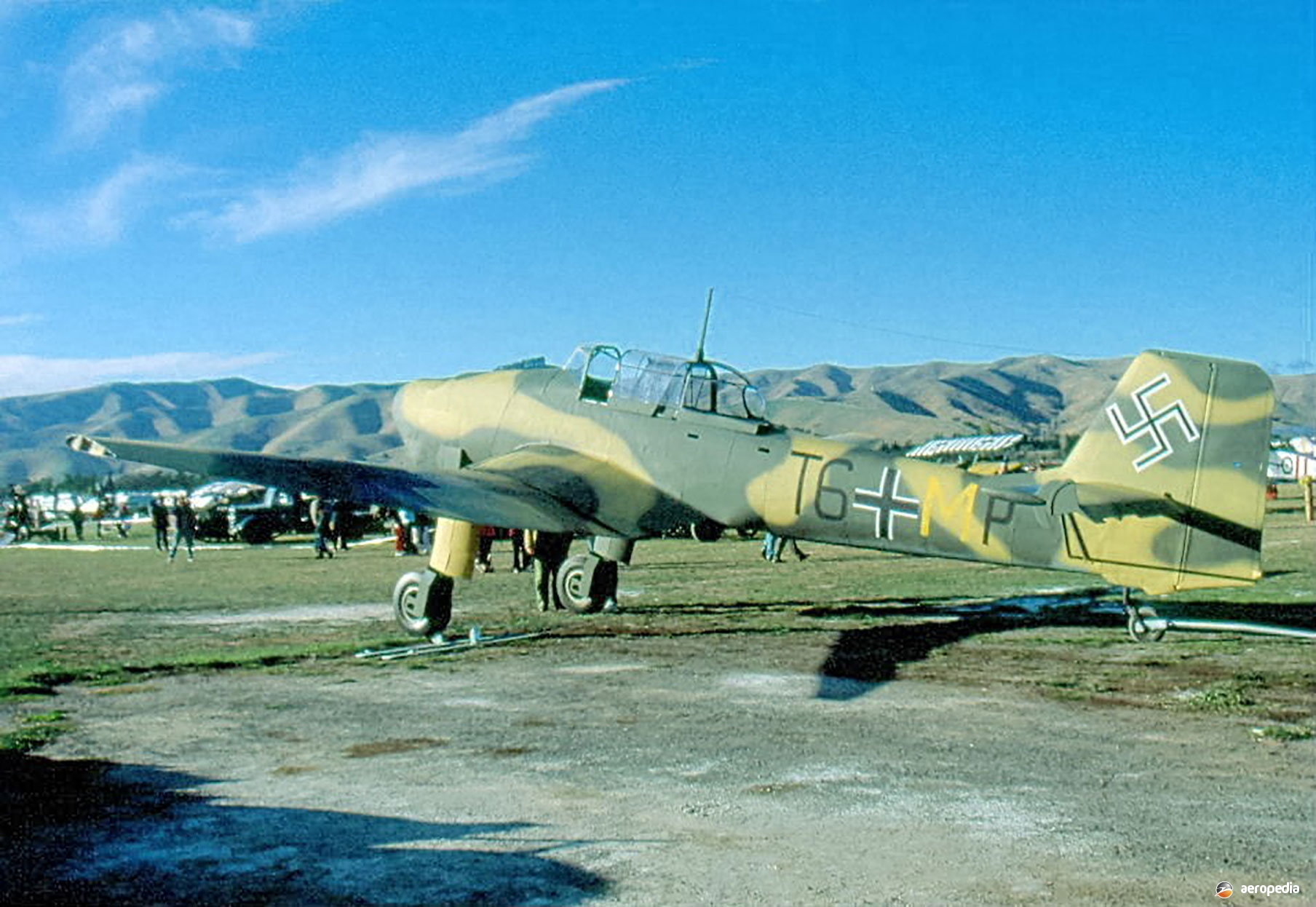
JUNKERS JU 87 · The Encyclopedia of Aircraft David C. Eyre
The Junkers Ju 87 or Stuka (from Sturzkampfflugzeug, "dive bomber") was a two-man (pilot and rear gunner) German ground-attack aircraft. Designed by Hermann Pohlmann, the Stuka first flew in 1935 and made its combat debut in 1936 as part of the Luftwaffe's Condor Legion during the Spanish Civil War.
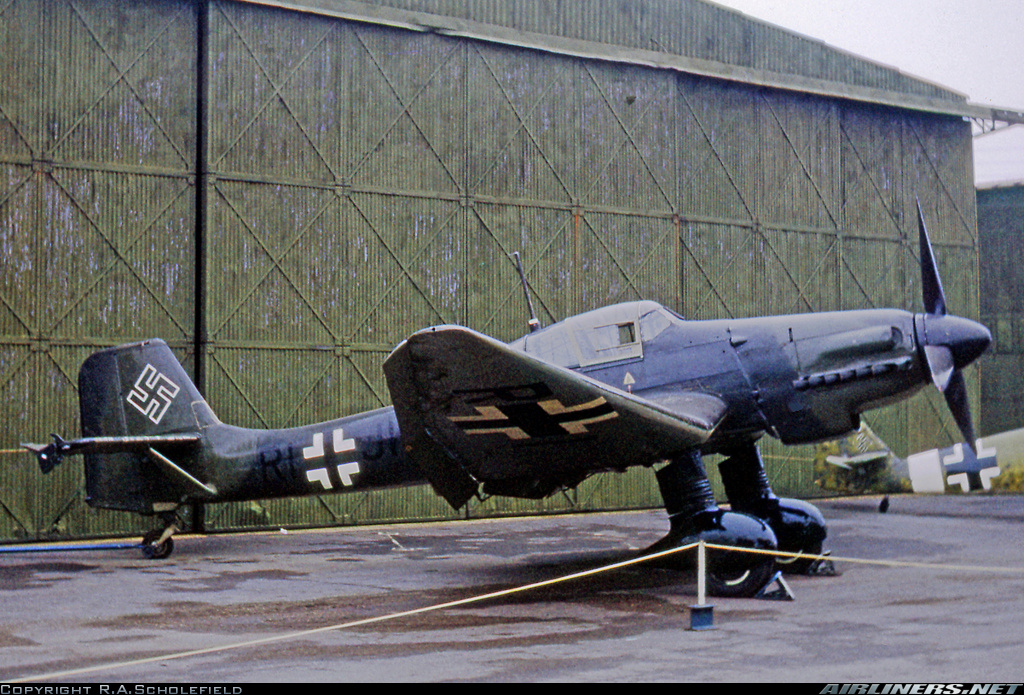
Junkers Ju87G2 Stuka Germany Air Force Aviation Photo 2527593
By Michael D. Hull. One of the deadliest and most effective airplanes of the Axis powers, the Junkers Ju-87 Stuka, owed its origin to a fearless World War I ace and, ironically, to innovative American aviation visionaries in the peaceful early 1930s.. After shooting down 62 planes, ranking second only to the famous "Red Baron," Manfred von Richthofen, and surviving the 1914-1918 war.
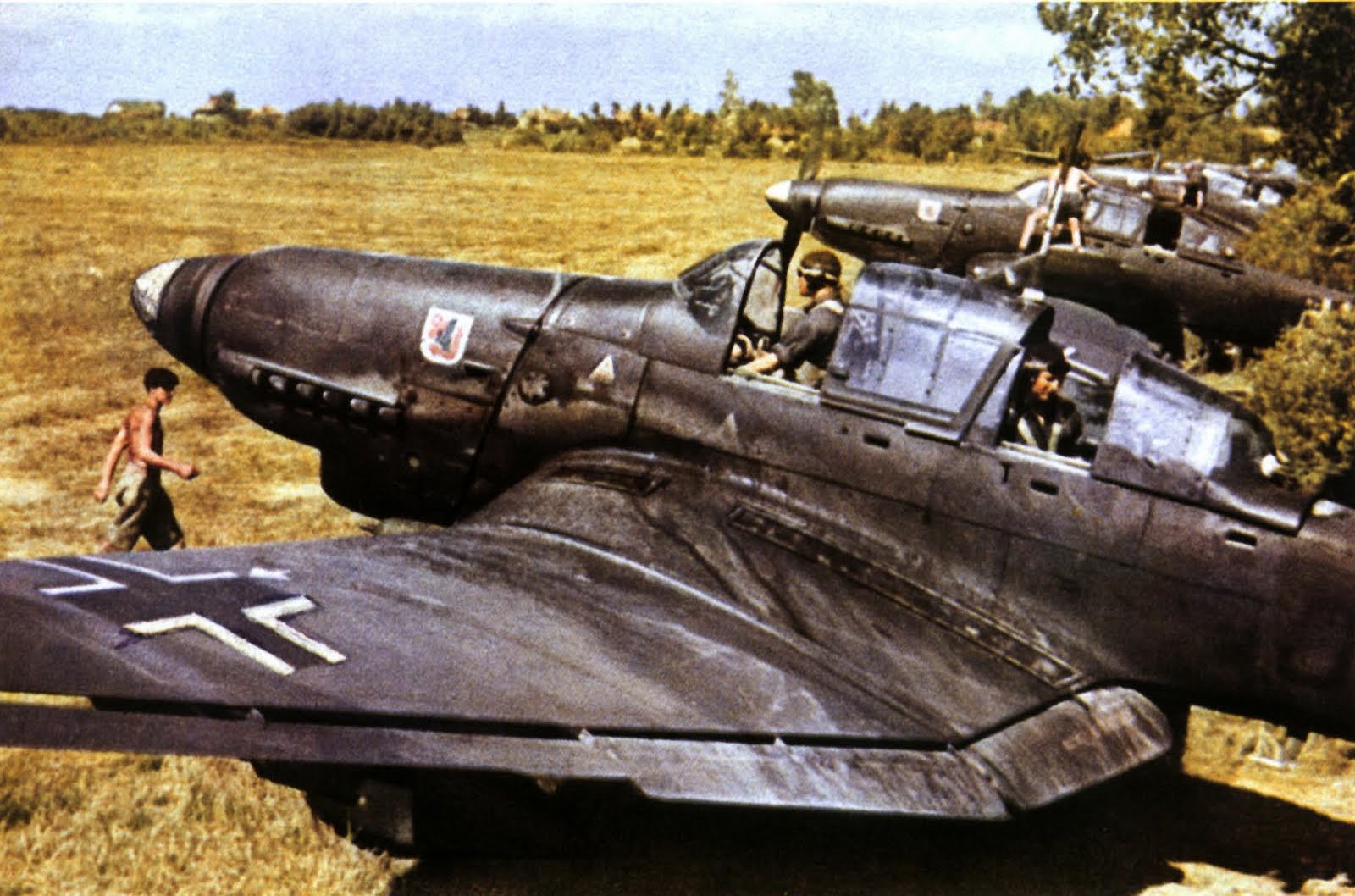
Third Reich Color Pictures Junkers Ju 87 'Stuka' in Color
The first Junkers Ju 87 Stuka flew in the spring of 1935, and by 1939 many were ready to wreak havoc in Poland. There, the Stuka's horrific noise (given a special edge with screaming sirens) and terrifying accuracy exemplified the German Blitzkrieg.. The Stuka was equally effective in the Western campaigns, where it served as mobile artillery, moving through France in close coordination with.

Junkers Ju87 Militär Wissen
The Junkers Ju-87 Stuka holds a special place in history as one of the most feared and recognizable dive-bombers of World War II. Its distinctive design, with its inverted gull wings and menacing appearance, struck fear into the hearts of its enemies.
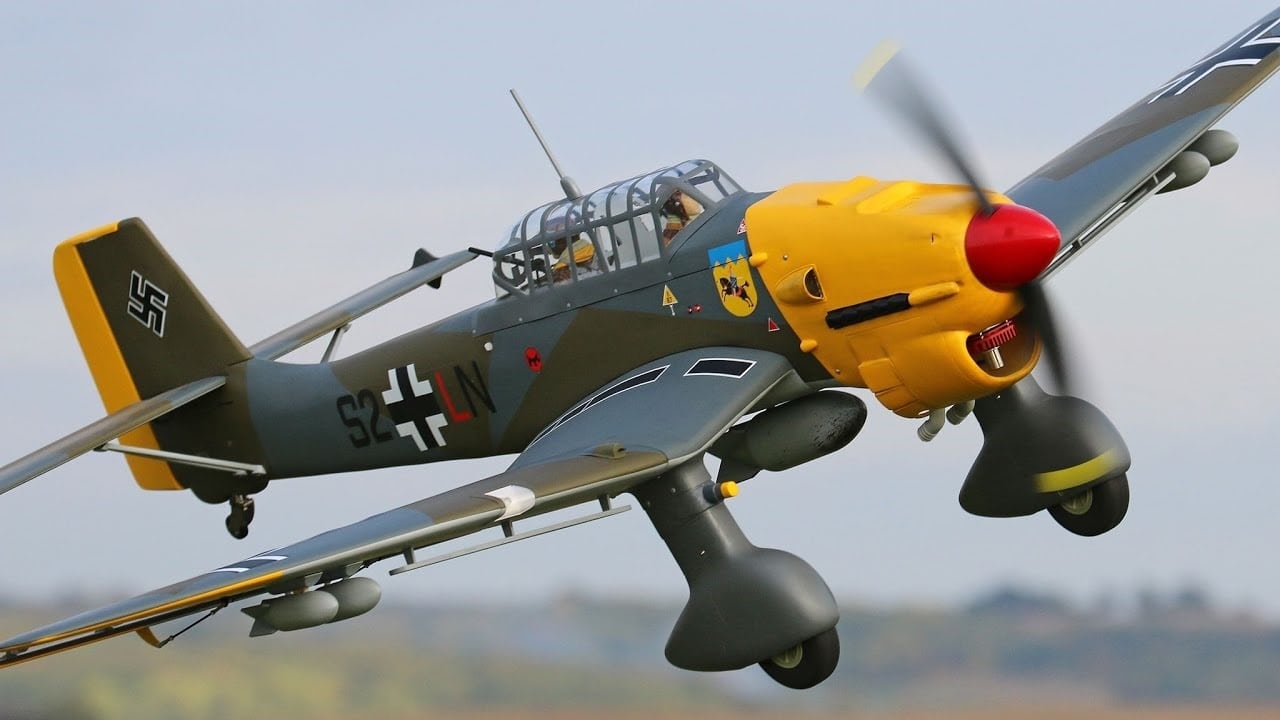
Junker Ju87 Stuka Dive Bomber A World War II Terror Weapon 19FortyFive
A Junkers Ju-87 begins to roll in on a target in the Balkans during the invasion of Yugoslavia in April 1941. The "little bomber" was considered outdated before WWII even began, but it wound up.
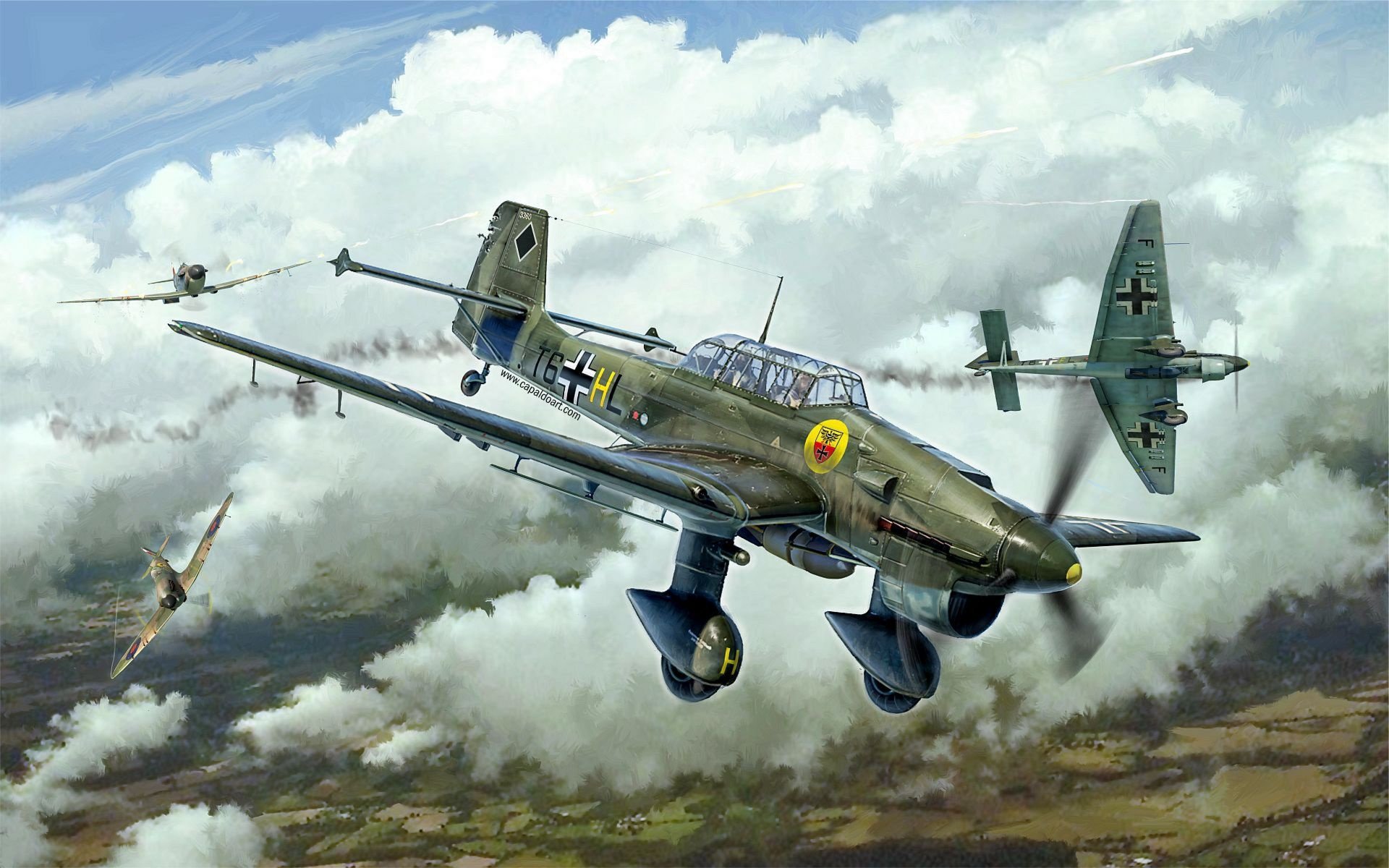
Military Junkers Ju 87 HD Wallpaper
The Junkers Ju 87B's featured Jericho Trumpets. Like any aircraft, the Junkers Ju 87 was constantly being updated, and the best-remembered model is the "B" variant. This was the first mass-produced version of the aircraft. It featured a much larger engine and was able to fly at a higher speed.
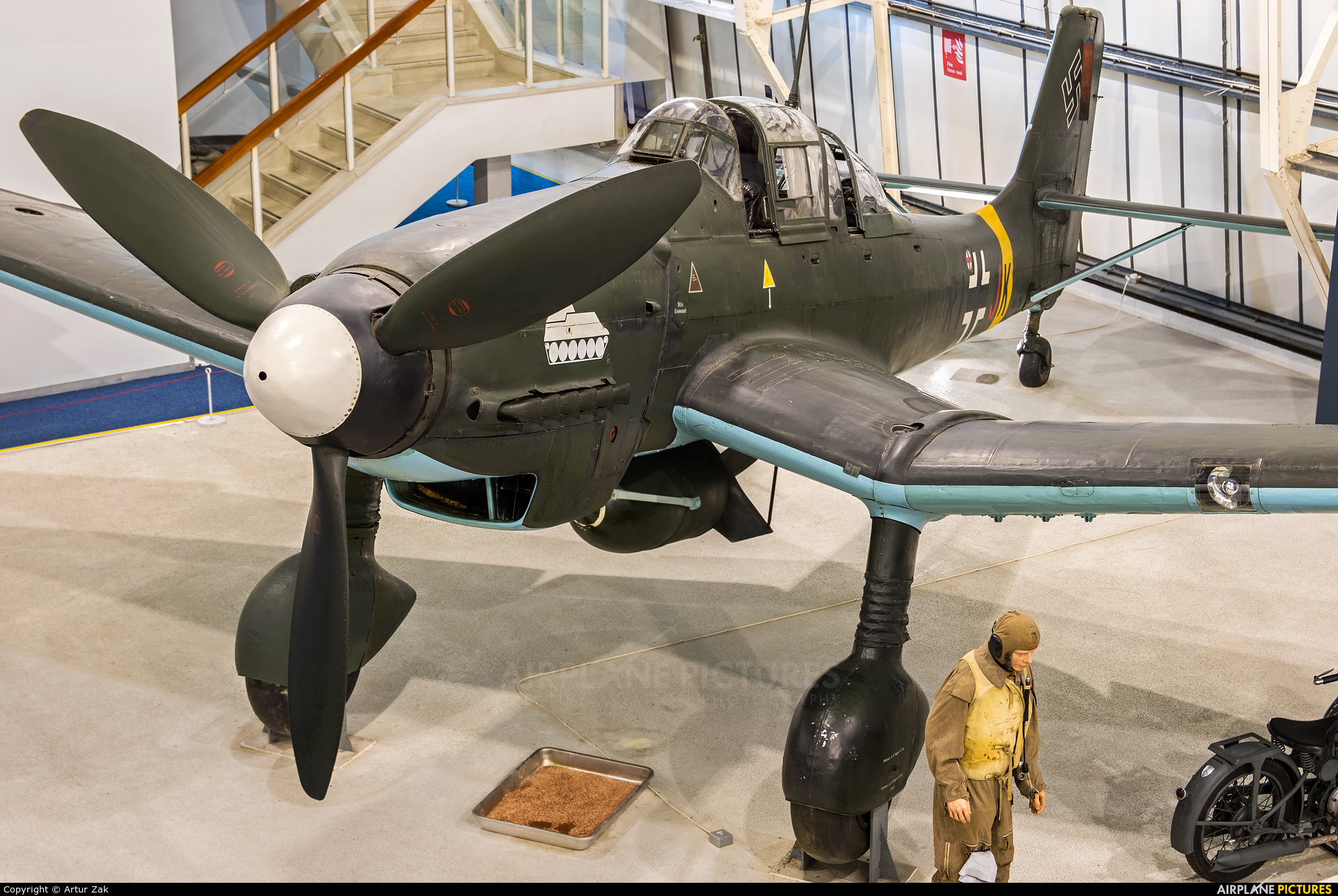
494083 Germany Luftwaffe (WW2) Junkers Ju87 at Hendon RAF Museum Photo ID 622929
Junkers Ju 87 "Stuka" dive bomber with 3.7 cm anti-tank guns under the wings. The aircraft, Hans-Ulrich Rudel's, is being started with a hand crank. Photo: Bundesarchiv, Bild 101I-655-5976-04 / Grosse / CC-BY-SA 3.0. Condor Legion's Junkers Ju 87A with Spanish rebel markings.

Top Bomber Aircraft in The World Junkers Ju 87 Dive Bomber
Production of the Ju 87 ended by the summer of 1938. By that time, some 262 were built by the Junkers factories located in Dessau (192) and Bremen (70). These numbers are according to M. Griehl (Junkers Ju 87 Stuka). Author D. Nešić (Naoružanje Drugog Svetsko Rata-Nemačka), on the other hand, notes a number of 400 aircraft being built.

A Born Again Roman Junkers Ju87 Stuka
The A-10 Thunderbolt II is the living descendant of the Ju-87 in many ways. Very few Ju-87 aircraft survived WWII, and only two have been preserved intact and placed on public display. There is a Ju 87B at the Chicago Museum of Science and Industry and a Ju 87D with the RAF Museum in Hendon, England.
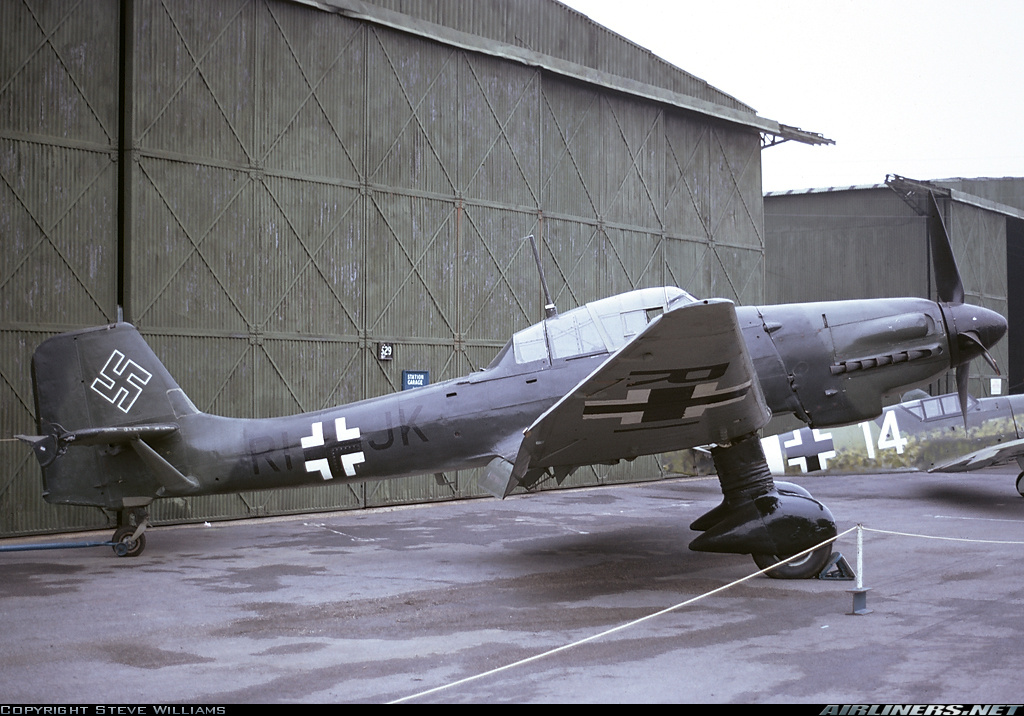
Junkers Ju87G2 Stuka Germany Air Force Aviation Photo 0216383
Junkers Ju 87 Stuka It was the scourge of World War II and no other aircraft terrorized its victims as much as the Junkers Ju 87 Stuka. Stuka was an abbreviated form of Sturzkampfflugzeug. or literally "diving fighting plane". Only later was it applied specifically to the Ju 87 Stuka. So to name a plane Stuka would be the equivalent of naming.

Junkers Ju 87 ‘Stuka’ The Battle of Britain Historical Timeline
Other articles where Ju 87 is discussed: Stuka:.low-wing, single-engine monoplane—especially the Junkers JU 87 dive-bomber—used by the German Luftwaffe from 1937 to 1945, with especially telling effect during the first half of World War II. The Stuka was designed to employ the dive-bombing technique developed earlier by the U.S. Navy—i.e., diving on the target at a steep…
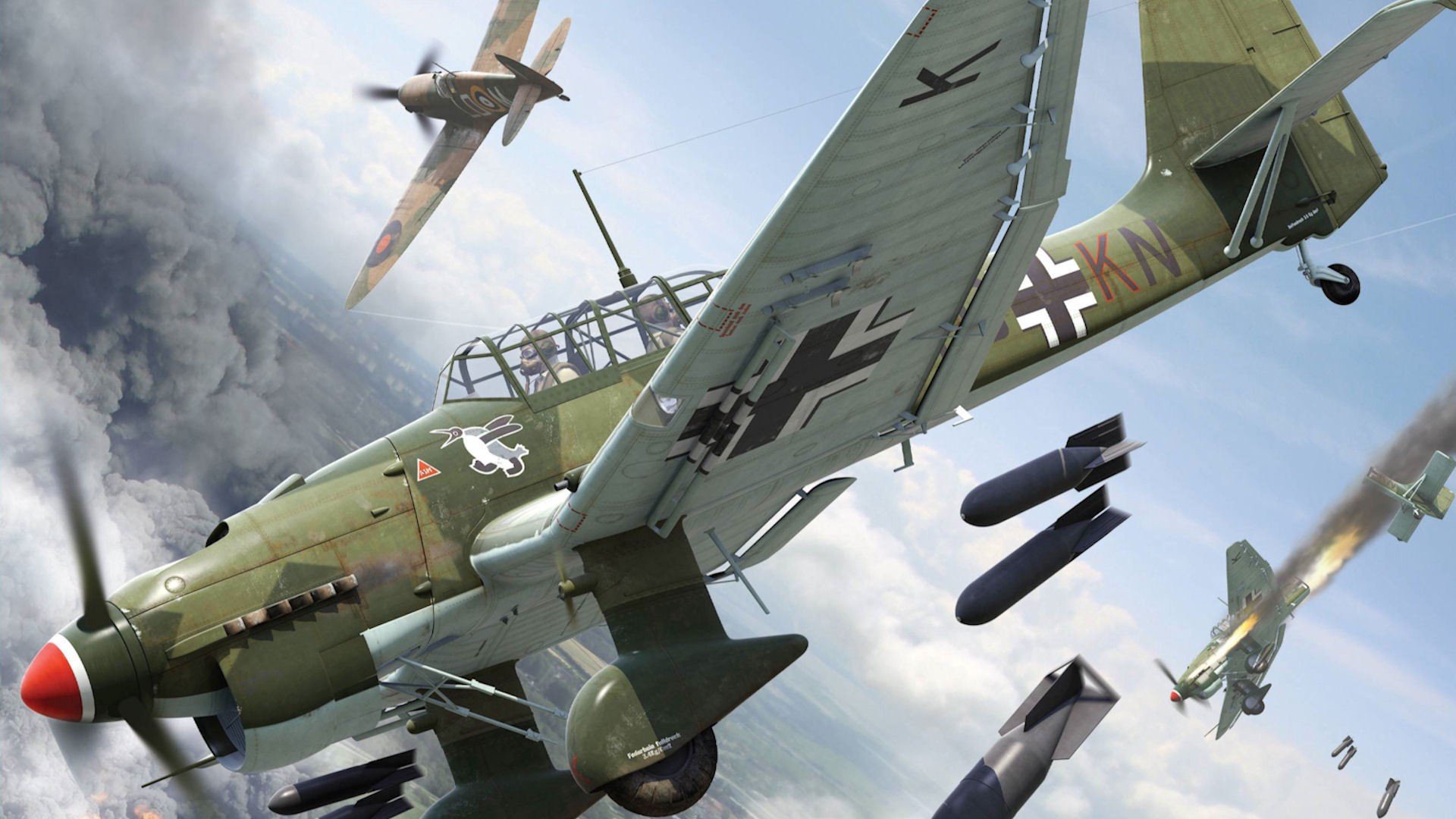
Military Junkers Ju 87 HD Wallpaper
The Junkers JU-87, better known by its nickname "Stuka," was one of World War II's most iconic combat aircraft.Its distinctive inverted "gull" wings and fixed undercarriage make it unmistakable.

A Born Again Roman Junkers Ju87 Stuka
Junkers Ju 87 Sturzkampfflugzeug ("dive bomber") or Stuka for short was the most famous German ground attack aircraft of World War Two.. The JU 87 planes sometimes also carried a Leica 250 GG Reporter camera in the centre bottom surface of the fuselage but angled forwards, fitted with MOOEV 24V electric motor drives. These were activated.